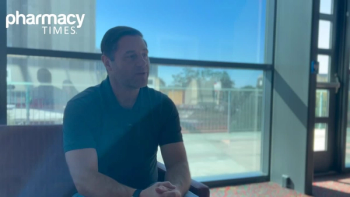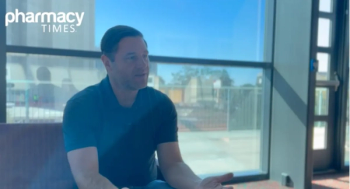
Cell Division Discovery May Lead to More Effective Cancer Immunotherapies
Uneven distribution of the signaling protein c-Myc could aid the development of cancer vaccines.
How a signaling protein distributes during asymmetric cell division has a direct impact on activated T cells, which could aid the development of more effective vaccines or improve immunotherapies for cancer.
The uneven distribution of the signaling protein c-Myc drives the different roles of daughter cells in the immune system, a study published in Nature found.
During asymmetric cell division, 2 types of daughter cells with distinct properties are generated with vastly different roles. This process is essential in producing different cell types and plays a key role in development.
Researchers were aware that when T cells are activated, 1 of the daughter cells became the rapidly dividing effector T cells that launches an immediate attack on infectious agents and other threats. The other daughter cell slowly divided memory T cells that function like sentries in order to provide long-term protection against recurring threats.
“Our study shows that the way in which the regulatory protein c-Myc distributes during asymmetric cell division directly influences the fate and roles of activated T cells,” said corresponding author Douglas Green, PhD. “We also show how this asymmetry is established and sustained.”
During the study, researchers used cells growing in both mice and the laboratory. The results of the study showed that during asymmetric cell division, high levels of c-Myc accumulated in 1 daughter cell. Within this cell, c-Myc acted like a shot of caffeine in order to launch and sustain the rapid proliferation of effector T cells. This included those in mice infected with the influenza virus.
The daughter cells with low levels of c-Myc acted like memory T cells, proliferating to start an immune response a month later when the mice were exposed to the virus again.
Additionally, the metabolic and signaling pathways were identified that act as a positive feedback loop to help sustain the high levels of c-Myc required of effector T cells to maintain their identities and function.
By disrupting certain components of the system, it disturbed the c-Myc product, resulting in the fate of T cells being altered and changed effector T cells to start operating like memory T cells.
“Our work suggests that it may be possible to manipulate the immune response by nudging production of c-Myc in one direction or the other,” Green said. “Potentially that could mean more effective vaccines or help to advance T-cell immune therapy for cancer treatment.”
C-Myc helps regulate the expression of numerous genes and plays a key role in cell growth, differentiation, and apoptosis. However, the excess production of c-Myc is found in a wide variety of cancers.
Prior research by Green revealed that c-Myc is also responsible for driving metabolic changes after T cell activation and these changes fueled proliferation of effector T cells.
“Activated T cells divide every 4 to 6 hours,” Green said. “There is no other cell in adults that can divide that fast, not even cancer cells.”
Several metabolic changes appeared as a result of the way c-Myc divided in the cell. The metabolic changes helped regulate how the cells would divide, differentiate, and proliferate.
Researchers conducted a series of experiments to show that by modifying the production of c-Myc and manipulating the system, it could affect the T cells fate after asymmetric cell division.
“While daughter cells of activated T cells seem to have very different fates, we showed their behavior could be altered by manipulating these metabolic and regulatory pathways to increase or decrease c-Myc levels,” Green said.
Newsletter
Stay informed on drug updates, treatment guidelines, and pharmacy practice trends—subscribe to Pharmacy Times for weekly clinical insights.





















































































































































































































